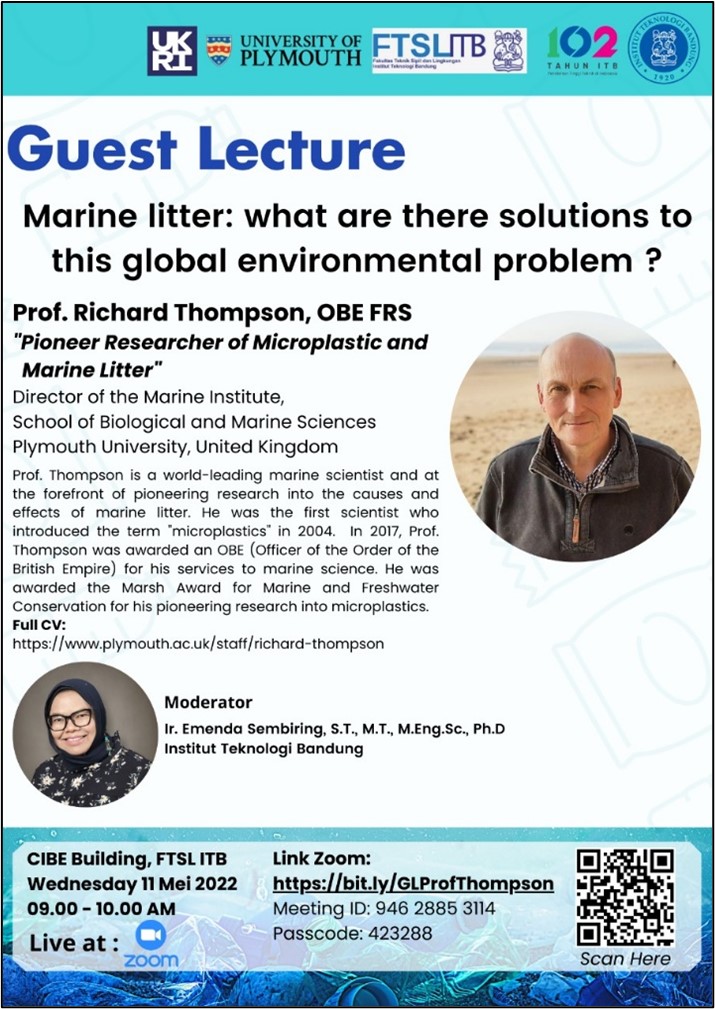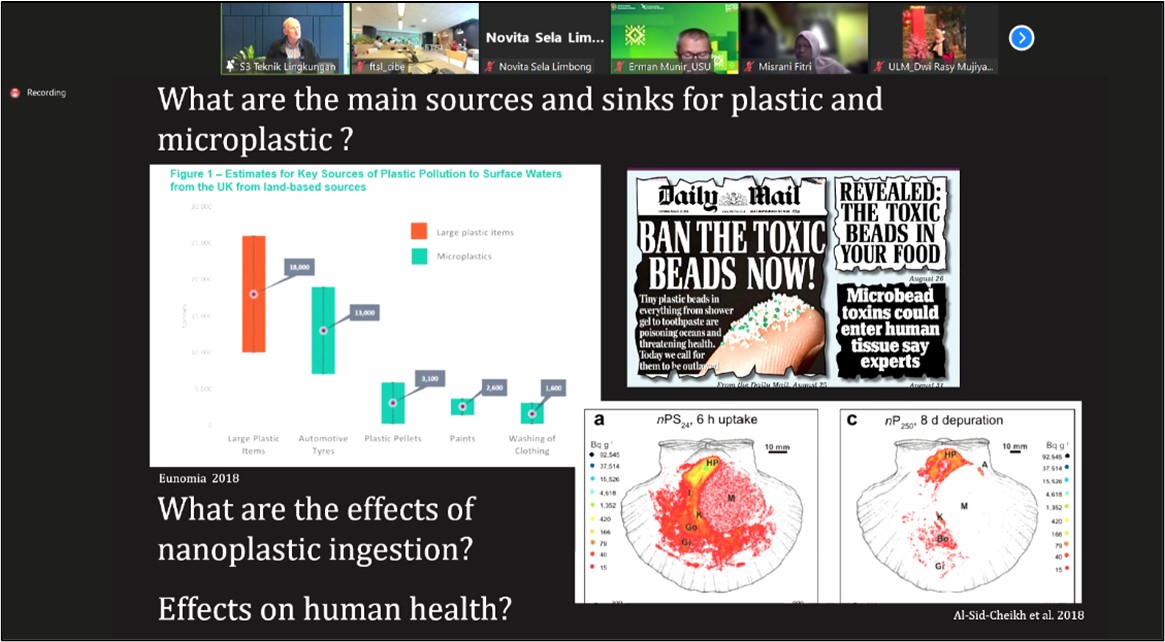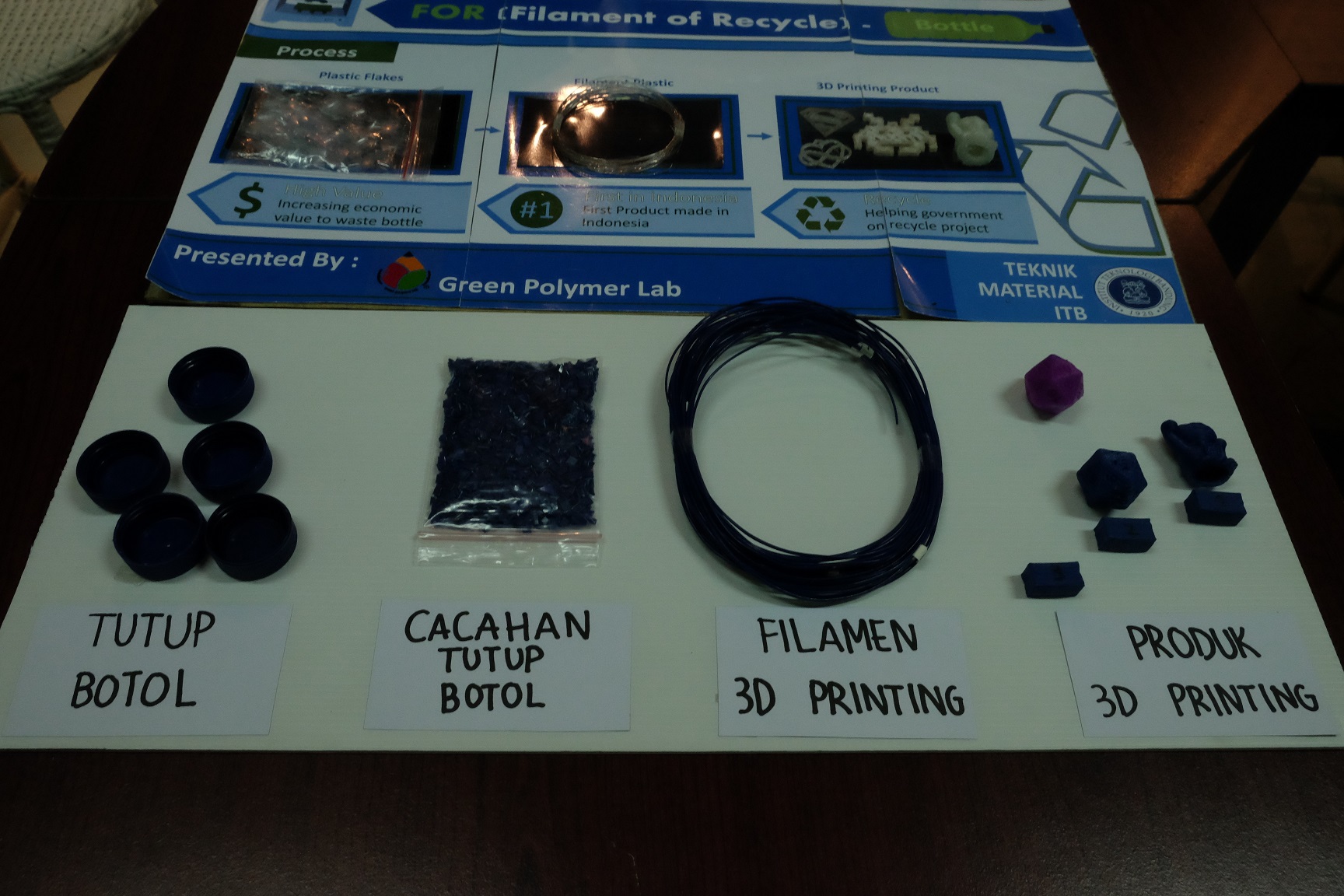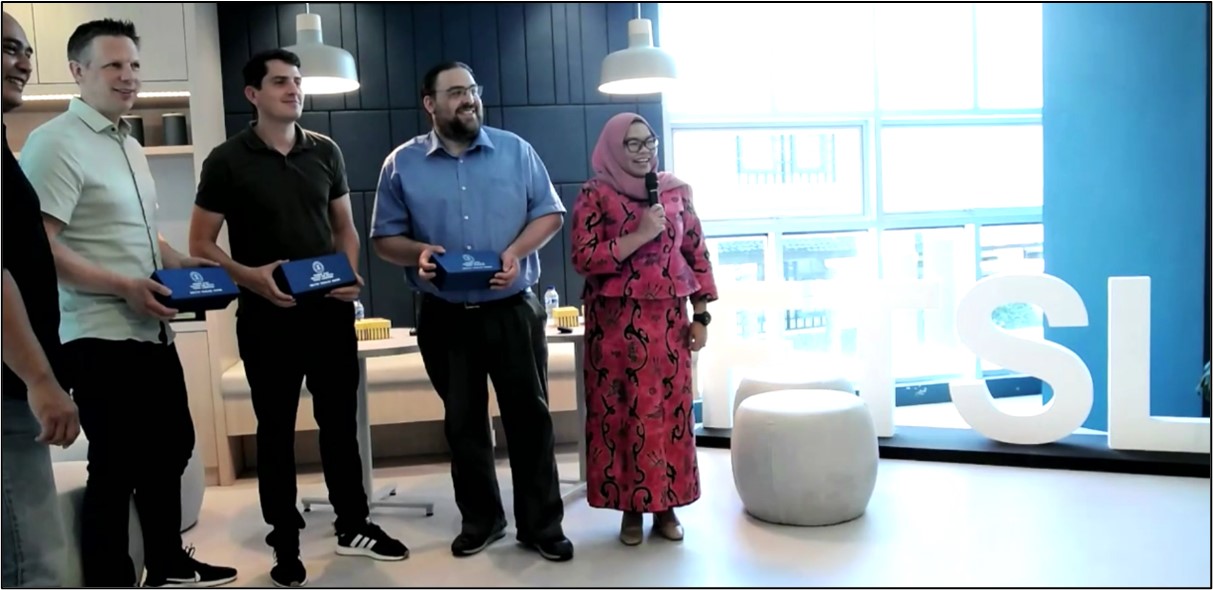The Challenge and Solution to the Problem of Plastic Waste in the Ocean

BANDUNG, itb.ac.id – Most marine litters consist of plastics. This type of waste can be found on beaches or even in the depths of the ocean. These marine litters also have different sizes: mega, micro, and nano. Obviously, this is harmful to marine life and it is detrimental to their habitat. As one of the world’s global problems, the issue of plastic waste has been worsening progressively and the amount of plastic waste in the ocean will increase three times from 2015 to 2025. Therefore, the Faculty of Civil and Environmental Engineering of ITB conducted a guest lecture titled “Marine Litter: What are the Solutions to This Global Environmental Problem” on Wednesday (11/05/2022).
On this occasion, the class invited Prof. Richard Thompson, a scientist and director of marine institute from University of Plymouth, UK. He was the person who first introduced the term microplastic in 2004 and he had been researching this subject until now. “Some plastic waste is large enough to be seen by a satellite, while some is so small that the human senses of sight can’t even detect it,” he explained.
Accumulation of plastic waste has a profound impact on the ocean from environmental, economic, public health, and faunal standpoint. For example, nanoplastics contained in seafood can directly enter the human body (i.e. the blood circulatory system) via the digestive tract. However, the downsides are not squarely linked to social benefits. In order to prevent the accumulation of plastic waste, plastic products need to be designed, used, and discarded more responsibly.
Richard underlined that plastic is not an enemy of humanity and people should not deprecate it. Plastic even has the potential to alleviate some negative effects that human activities have to the environment. For example, it decreases the number of packaging used for consumption, which in turn also reduces food waste. “The real challenge is to find a solution that can keep the advantages of plastic while also removing its disadvantages.”
One reason for the worsening condition of plastic waste is the business model that hasn’t changed at all for the past 70 years. In the 1950s, people had the perspective that mass-produced plastic can be thrown away after a single use. This behavior is called throwaway living, a lifestyle in which products are used temporarily and then discarded without any care. As a consequence, nowadays, 50% of coastlines are covered with single-use items.

There are several strategies that will help tackle marine litter, especially plastic. These strategies are to reduce, reuse, and recycle in all of our activities that require plastic. However, this concept of recycling cannot always be implemented. This process would improve only by a little in the next 60 years. By that time, the number of plastic entering the ocean will have surpassed the capacity of cleaning and collecting it.
Carbon sources for plastic manufacturing include nonrenewable oil and fossil gas. About 8% of the world’s oil production is used for making plastic. 4% of which is from carbon while the other 4% comes from the energy that is used to process raw materials into plastic. Richard suggested the idea to increase the recycling capacity so that carbon needed does not materialize from oil and fossil gas. This means that carbon sources are replaced by unused plastic products, which in turn decreases the use of oil and fossil gas as well as reduces the accumulation of plastic. He then added, “We need to have a workflow model that is economically viable in order to achieve a preferable circulation of products and waste.”
In addition, plastic products are designed based on their whole lifespan. Therefore, a favorable design for these products is very important for the environment. Microfiber for instance, which is used in clothing, is one of marine litters of which its design can be improved from its material, weaving process, and stitching. This affects the release of fibers up to 80-90%. Moreover, products need to be standardized as well as labeled appropriately, and the need for a good waste-management system is also not to be neglected.
“Plastic waste exists in the ocean because of an inefficient and outdated business model,” the Professor concluded.
Reporter: Ruth Nathania (Environmental Engineering, 2019)
Translator: Ariq Ramadhan Teruna (Faculty of Industrial Engineering, 2021)

scan for download







